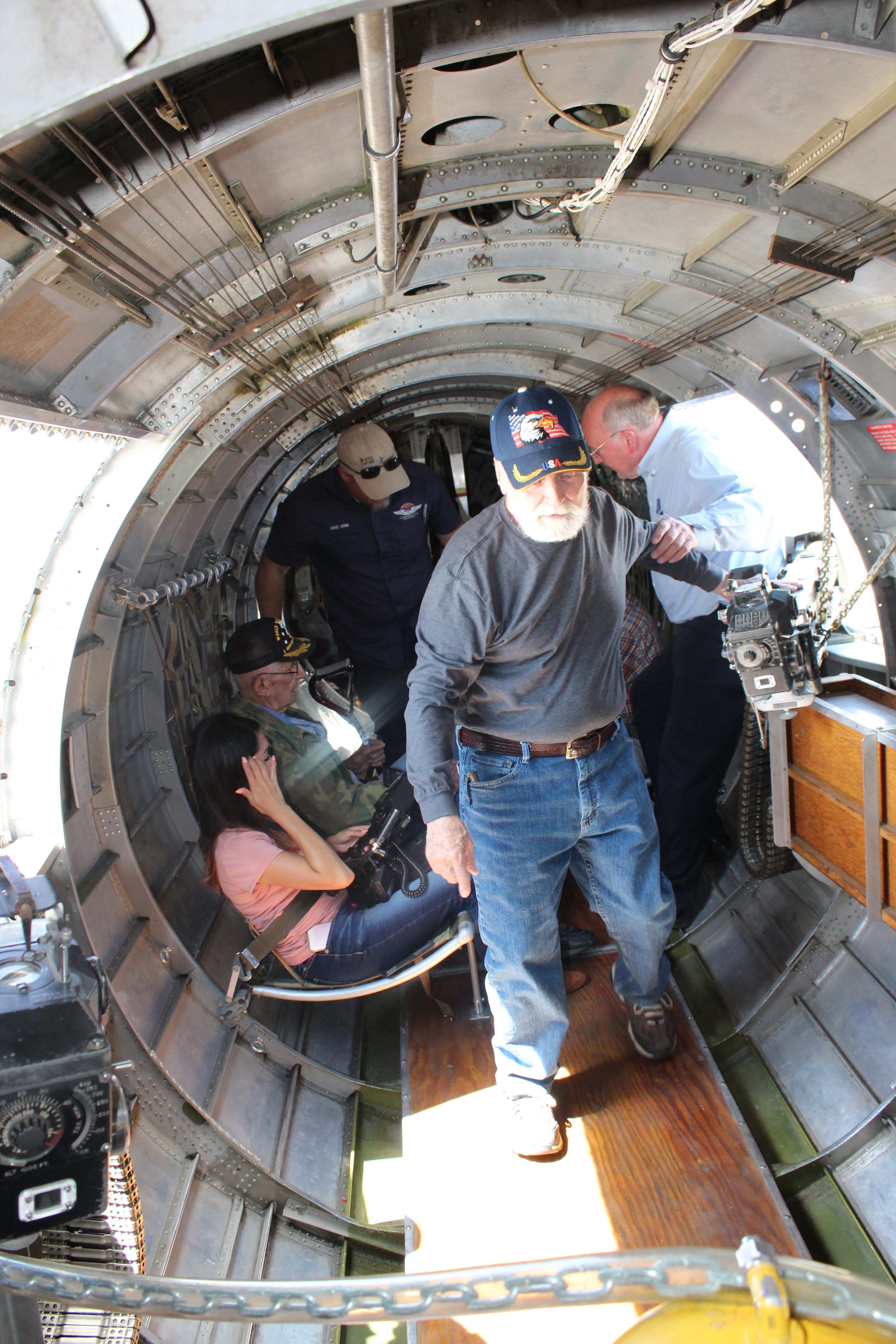The shiny, riveted curves of the machine shuddered and rattled and then the four 1,200 horse power engines roared to life.
A lucky few veterans and other passengers had the opportunity to fly aboard the Sentimental Journey B-17 Bomber over the skies of Hays Tuesday.
The Commemorative Air Force is a non-profit organization that is the guardian of the restored B-17.
The B-17 was the work horse of the bomber fleet during World War II, dropping more than 640,000 tons of bombs during WWII.
Boeing, Vega and Douglas produced 12,731 B-17 aircraft in five years during the war. The Sentimental Journey is one of only 10 B-17G’s still flying today.
The Sentimental Journey did not serve in combat. It rolled off the Douglas line in Long Beach, Florida, in November 1944, and by the time the military took possession, the war was over.
The plane was headed for the scrap heap but ended up being sent to Pacific to do mapping missions. The plane also was used for atmospheric nuclear weapons testing drone control. The plane finally did a stint in firefighting before in became a part of the Commemorative Air Force fleet.
It took five years to restore the aircraft to its World War II fighting strength.
Charles Vsetecka, 94, leaned on his cane in the shade of the B-17’s massive wing, as he waited for his turn to ride in the B-17.
Vsetecka, of Victoria, was a radar operator in a B-24 in the Pacific Theater during the war.
His mission was to detect enemy ships and relay them to the pilot, who would radio the positions to the headquarters.
Vsetecka recalled engaging the enemy and loosing comrades in arms.
He thought he might lose his own life when a typhoon hit Okinawa. A friend reinforced their tent with boards, and it was one of a handful that were not blown away in the storm.
Vsetecka said the B-17 flight was different than his days in the B-24. He spent most his time starring at the radar screen and not peering out at blue sky and green fields.
Each of the B-17 bombers carried a crew of 10. Most of the crew were 17 to 19. A pilot might be as old as 22. Most of the men were small to enable easier mobility in the tight spaces of the B-17, usually about 5’2” to 5’4” and 120 to 140 pounds.
The smallest crew member was usually the ball torrent gunner.
Each crew member was expected to fly 25 missions in a tour, but some crew members flew 100s of bombing runs.
The B-17 could carry 8,000 pounds of bombs on short-range missions (400 miles or less) or 4,500 pounds for long-range missions (800 miles).
The bombers flew in box or diamond formations in groups of up to 250 to 300 planes per mission.
The plane’s max range was 3,259 miles with a service ceiling of 36,400 feet, which made for a long, cold ride for the crew.
Temperatures were measured as much as 40 below zero during B-17 missions. The crew members wore fleece-lined flight suits to stay warm. They also had oxygen tanks on board in the time before pressurized cabins.
The “Flying Fortress” was so called for its heavy armaments, which were needed in the time before fighter escorts.
The B-17 was equipped with 13 .50 M2 Browning Machine Guns.
The Sentimental Journey will be available for public flights at the Hays Regional Airport on Saturday and Sunday.
Cost is $425 per person for radio room/gunner seats (six total); $850 for bombardier seats (two total) – highly coveted in the nose of the airplane enclosed in see-through plexiglass.
Passengers must be able to climb into aircraft.
Radio room/waist gunner seats require climbing a three-step ladder; bombardier/navigator seats require climbing a six-step ladder.
Earplugs are provided or bring your own.
For more information on the Sentimental Journey or the Commemorative Air Force click here.


















